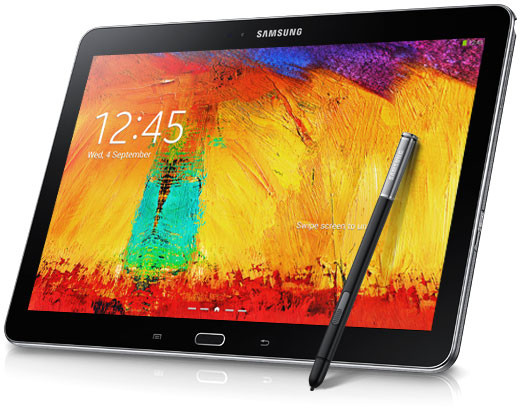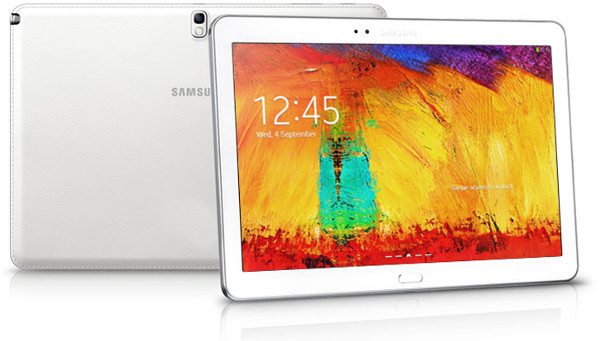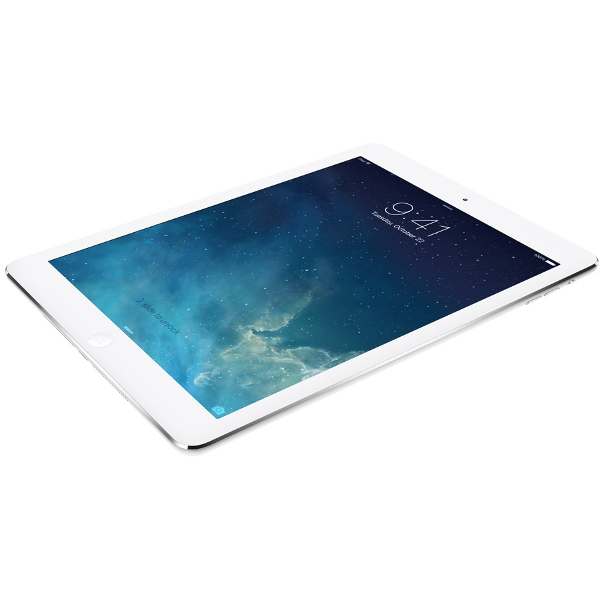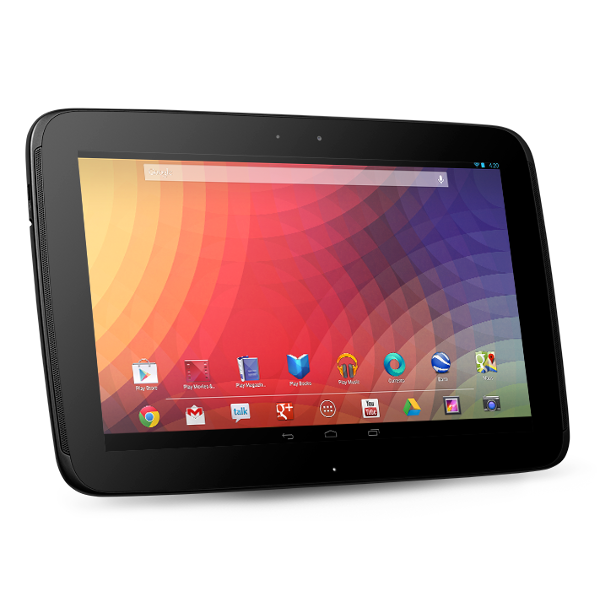Samsung Galaxy Note 10.1 (2014 Edition) Review: Wi-Fi Vs. LTE
Today's review of Samsung's Galaxy Note 10.1 (2014 Edition) includes the LTE-capable and Wi-Fi-only tablets, allowing us to compare Samsung's own Exynos 5 Octa platform to Qualcomm's Snapdragon 800. Can either configuration usurp Apple's iPad Air?
Why you can trust Tom's Hardware
Galaxy Note 10.1 (2014) Wi-Fi Or LTE?
In a world where Apple's iPad is the dominant force, the tablet space is evolving differently than the smartphone market, despite similar origins. For the Note 10.1 2014, Samsung clearly puts forward a compelling alternative. Whether it's the insanely beautiful 2560x1600 display, S Pen functionality, dual stereo speakers, or other TouchWiz features like Multi Window, there is plenty to sway potential buyers away from the Apple camp.
On paper, the Exynos 5 Octa 5420 should be an absolute beast, but we experienced more than our fair share of odd hiccups while navigating the TouchWiz interface. While we don't believe this is indicative of the hardware's capabilities, it's a little concerning since Android is mature enough that mid-range phones like the Moto G run the operating system more smoothly. Rather, we suspect the performance issues come from a combination of a 2560x1600 resolution and Samsung's much-maligned TouchWiz interface. Despite random frame drops, the Note 10.1 is still quite capable in Web browsing, gaming, media consumption, multitasking, and S Pen utilization.
When it comes to our benchmark suite, including raw CPU, GPU, and battery performance, we have to give the edge to the Snapdragon 800-equipped Note 10.1 (2014 Edition) LTE. It consistently has good, if not better, performance than the Exynos 5 Octa-equipped Wi-Fi model.
But is that enough to warrant a price premium and the service fees related to an LTE subscription? That's entirely situational, and probably more tied to your need for Internet access away from hotspots than the performance of any given SoC. You'll pay for the LTE model if you want a cellular modem. You won't pay more for it just to get Qualcomm's more capable architecture. If Wi-Fi support is as fancy as you get, then the Exynos-based model will be your natural choice.
Fortunately, Web-oriented benchmarks are a boon for the Wi-Fi version of the Note 10.1 (2014 Edition); it outperforms the LTE version in just about every test. However, both models still fall behind the iPad Air almost universally, reinforcing the idea that there is plenty of room to improve the responsiveness of Android-based tablet. We've seen Intel do a lot of work on this front, and we're eager to see how the company's engineering resources might go into user experience improvements now that it's involved in more Android-based hardware.
Samsung Galaxy Note 10.1 (2014) Wi-Fi
Samsung Galaxy Note 10.1 (2014) LTE
Displays on both Note 10.1 models are the same, so the results are fairly close with small variations attributed to physically different panels. The luxurious QHD screen is very good, and is probably a selling point for anyone interested in purchasing the Galaxy Note.
Overall, major wins include the great display and improved S Pen integration. The stereo speakers and overall build quality could use some work, though. We'd like to see front-facing speakers and more premium materials (or better finishes for polycarbonate). Finally, aspects that definitely need improvement are software optimization and the reduction of bloatware. This should be addressed similar to the way HTC streamlined the latest versions of Sense UI, and possibly by leveraging the Samsung App Store for those who want extra software.
Get Tom's Hardware's best news and in-depth reviews, straight to your inbox.
The only thing really stopping us from recommending the Note 10.1 2014 over the iPad Air, or even Google's Nexus 10, is the higher cost of $550. Apple has the iPad Air selling for $500 and the aging Nexus 10 is priced at just $400. Both are arguably better values. Not to mention, odd performance hiccups shouldn't be happening at this point in the tablet game.
If you're looking for the best overall tablet in the $500 to $600 price range, the Note 10.1 (2014 Edition) is a tough sell. And unless the S Pen functionality really entices you to try the Note line, the situation probably won't change until Samsung irons out its software's performance kinks or blows us away with innovative, must-have features we haven't experienced yet.
Follow Denis and Tom’s Hardware on Twitter.
Current page: Galaxy Note 10.1 (2014) Wi-Fi Or LTE?
Prev Page Results: Battery Life-
blackmagnum The only possible way Samsung mobile devices can be a worthwhile alternative to Apple is when they ditch the every-man Android and create their own tightly controlled/ managed OS like Apple. Do that and consumers might not feel like they're just buying the Samsung for the hardware.Reply -
Farrwalker On page 7. Results: CPU Core Benchmarks:Reply
Your bar graph "MobileXPRT 2013" seems to be in error.
For example, the text says, "Note 10.1 (2014 Edition) Wi-Fi leads with 300 points . . ."
but the bar is the shortest and indicates less than 150 points.
-
blueer03 You need to proofread this big time. From page 9:Reply
Samsung's Exynos-based Note 10.1 (2014 Edition) Wi-Fi holds its own against the Tegra Note 7, while the LTE version of the Note 10.1 (2014 Edition) again falls significantly behind its Snapdragon 800-powered Wi-Fi counterpart.
And this happens all throughout. The LTE is a Snapdragon, the Wifi is an Exynos. Keep repeating that to yourself as you re-write the descriptions and it will make this easier to read. -
Kevin Harrelson We got one of these for my son (age 13) to help with his school work. We got it from Best Buy and got the extended warranty. Both sound dumb, but it was actually a good move! The backlight has gone out on this thing TWICE. I happen to think that it is a lovely little tablet, but the backlight is a major reliability issue.Reply -
adamovera ReplyOn page 7. Results: CPU Core Benchmarks:
This benchmark's sub-tests produce scores in seconds (lower is better), and the overall score is given as a typical higher-is-better score, so the lowest bar indicates the fastest completion. Sorry about the confusion, I'll look into other ways to represent this test.
Your bar graph "MobileXPRT 2013" seems to be in error. For example, the text says, "Note 10.1 (2014 Edition) Wi-Fi leads with 300 points . . ." but the bar is the shortest and indicates less than 150 points.
-
adamovera ReplyYou need to proofread this big time. From page 9:
Good catch, thanks! Fixed.
Samsung's Exynos-based Note 10.1 (2014 Edition) Wi-Fi holds its own against the Tegra Note 7, while the LTE version of the Note 10.1 (2014 Edition) again falls significantly behind its Snapdragon 800-powered Wi-Fi counterpart.
And this happens all throughout. The LTE is a Snapdragon, the Wifi is an Exynos. Keep repeating that to yourself as you re-write the descriptions and it will make this easier to read. -
Tomtompiper The 2014 is almost 5 months old and has been superseded by the Amoled screened Galaxy Tab S 10.1 which wipes the floor with the opposition. http://www.gsmarena.com/samsung_galaxy_tab_s_105-review-1097.php Do try to keep up!Reply -
adamovera ReplyThe 2014 is almost 5 months old and has been superseded by the Amoled screened Galaxy Tab S 10.1 which wipes the floor with the opposition. http://www.gsmarena.com/samsung_galaxy_tab_s_105-review-1097.php Do try to keep up!
Actually, you'd think this has been phased out, but it's the current 10-inch Galaxy "Note" product, meaning it has the S Pen. The Galaxy "Tab" S does not - still unclear to me what makes the "S" stand out. I believe Samsung is literally attempting to offer an alternative product to every single other device in existence - complete mobile domination. I lost count of their current "Galaxy" line at 11 products, and that was awhile back.
The duo of Note 10.1 (2014)'s came in very handy both as comparison data in other articles and as testbeds for compiling our benchmark suite. Unfortunately, the article had to be pushed back several times, but the huge hardware difference between products carrying the same name was always something we wanted to illustrate, initially for the chipset-vs-chipset angle, but later for the optimization aspect as well. We're currently working through a small backlog of mobility articles, but each will be more timely than the last. My apologies. -
Blazer1985 I really wish Samsung could help the end user distinguish what they are buying. The 2 Note are classified as "LTE" and "WIFI ONLY" which sounds like 2 equal devices except for the sim card slot while they actually have a totally different soc.Reply -
vaughn2k ... and Samsung prices are now on par with Apple's. others are okay. Will wait for Asus and other competition. Should be cheaper though...Reply



